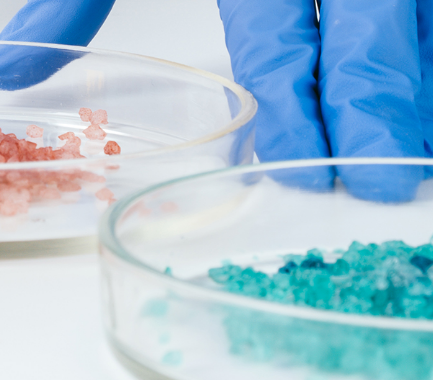Your contact
PENPET-Team - Hamburg

Christoph Meister
Sales
Tel. +49 (0) 40 - 675 7 99 30
sales@penpet.de
Get in touch with us.
n-Propanol
N-propanol is an organic compound from the group of primary alcohols, which is of great importance for the chemical industry as a solvent and as a starting material for organic syntheses. The substance is obtained in large-scale processes from propionaldehyde, which is hydrogenated in the gas phase at temperatures above 110 °C and using catalysts. Natural n-propanol occurs in small amounts in many plants such as ginger, myrtle, pineapple and corn.
The substance is mainly used as a solvent and is used in the production of paints, varnishes, waxes and resins, among other things. Due to its fungicidal, virucidal and bactericidal properties, n-propanol is an important component of disinfectants and cleaning agents. The compound also serves as a starting material for the production of medicinal active ingredients and crop protection agents. The chemical industry also uses n-propanol as an intermediate for the synthesis of other organic compounds.
At PENPET you get n-propanol of the highest quality, from a reliable partner who will also meet your requirements in the long term. We look forward to receiving your inquiry for an individual offer. Prompt delivery of the liquid compound can be made in packages with different weights.
CAS no. 71-23-8
EINECS no. 200-746-9
Molecular formula: C3H8O
Synonyms: Propanol, Propan-1-ol, 1-Propanol, Propyl Alcohol, Propyl Alcohol, Terosol, Optal, 1-Hydroxypropane
Areas of application: Solvent, disinfectant, component of cleaning agents, starting material for the production of plant protection products and active pharmaceutical ingredients, intermediate product for organic synthesis
More information
N-nropanol is a simple alcohol of propane. The substance is an unbranched compound of three carbon atoms with the corresponding bonds to hydrogen atoms, the terminal carbon atom of which has a hydroxy group. This functional group gives n-propanol a high electrical polarity that makes it miscible with water and other polar solvents. The hydroxy group also determines the reaction behavior of the compound. The substance enters into the typical reactions of alcohols such as oxidation with aldehyde formation or esterification together with carboxylic acids.
N-propanol, which is also referred to as 1-propanol because of the position of its hydroxyl group, should not be confused with the isomeric compound 2-propanol. This has a hydroxy group on its central carbon atom and, despite the structural similarity, has different properties.
Under normal conditions, n-propanol is a clear, runny compound with an odor reminiscent of alcohol. The substance changes into the gaseous state when heated above 97 °C and solidifies to a solid when cooled below -126 °C. N-propanol is very soluble in water and numerous organic solvents such as ethanol, methanol, diethyl ether, acetone, chloroform, hexane, cyclohexane and benzene. With some of these solvents, it forms azeotropic mixtures that have a common boiling point and can no longer be separated from one another by simple distillation.
N-propanol is chemically stable under normal conditions. However, it tends to form peroxides in air. There is a risk of explosion as a result. Contact with strong oxidizing agents, alkali metals, alkaline earth metals and potassium tert-butoxide can lead to violent, dangerous reactions. N-propanol should be stored in an airtight and cool place.
The substance is combustible and highly flammable. The vapors of the volatile compound can form explosive mixtures with the surrounding air. Because they are heavier than air, the vapors can spread unnoticed along the floor of the workrooms. Ignition sources such as open flames, electrical discharges, mechanically generated sparks or hot surfaces can therefore trigger dangerous remote ignition of the substance. The combustion and thermal decomposition of n-propanol can produce harmful and hazardous gases such as carbon dioxide, carbon monoxide, hydrogen and formaldehyde.
N-propanol is a strong irritant compound that poses acute and chronic health hazards. The substance causes redness, degreasing and inflammation on the skin. Allergic reactions and persistent sensitization are possible. Soaked parts of the body should be cleaned immediately with soap and water. In the event of severe exposure, medical treatment is required. In addition to burning pain and redness, conjunctivitis and corneal damage can also occur in the eye. Irreversible visual impairments can occur. The affected eye must be rinsed immediately under running water and immediately examined by an ophthalmologist.
Inhalation of vapors or aerosols of the compound may irritate the respiratory tract and cause burning pain in the mucous membranes, coughing, lacrimation, headache, drowsiness and dizziness. If n-propanol is swallowed, irritation of the digestive tract, stomach pain and nausea may occur. Metabolism of the compound can cause headaches, dizziness, weakness, drowsiness and hypotension. In addition, severe impairments of the central nervous system such as coordination disorders and unconsciousness, respiratory paralysis and organ damage to the liver and kidneys can occur. If poisoning with n-propanol is suspected, medical help must be sought immediately.
Due to its toxic effect on aquatic organisms, n-propanol is considered to be slightly hazardous to water. Entry of the compound into the ground, water bodies or the sewage system must be avoided. The authorities must be informed if large quantities of the substance escape. As a hazardous substance, n-propanol is subject to special transportation regulations.
